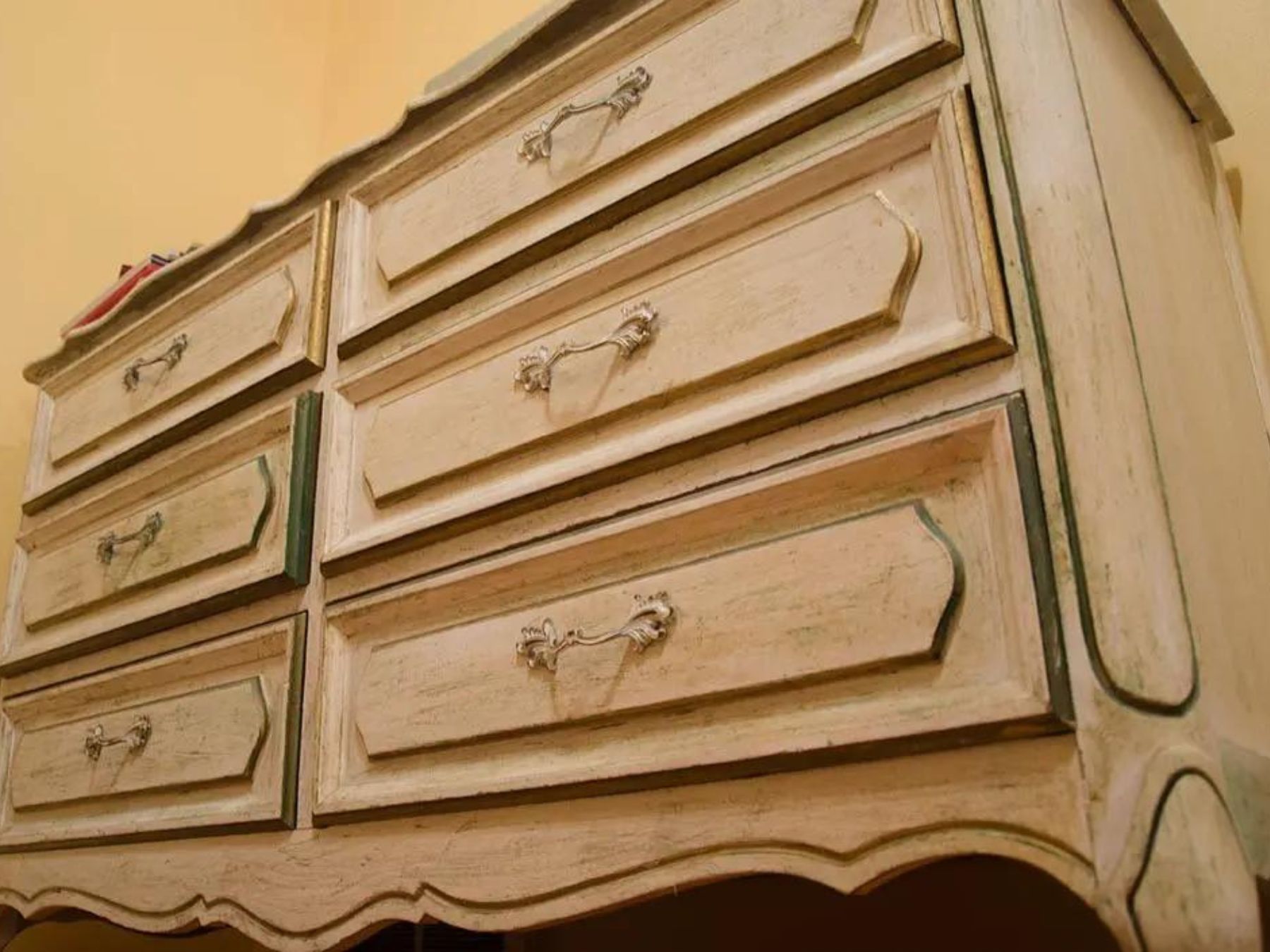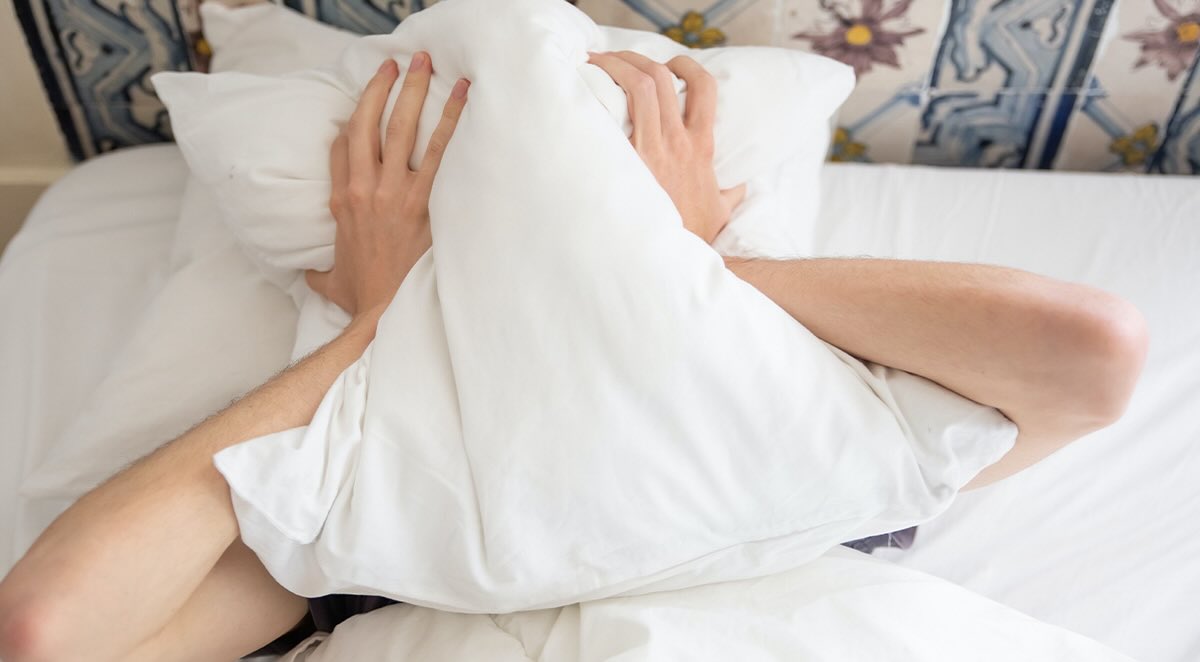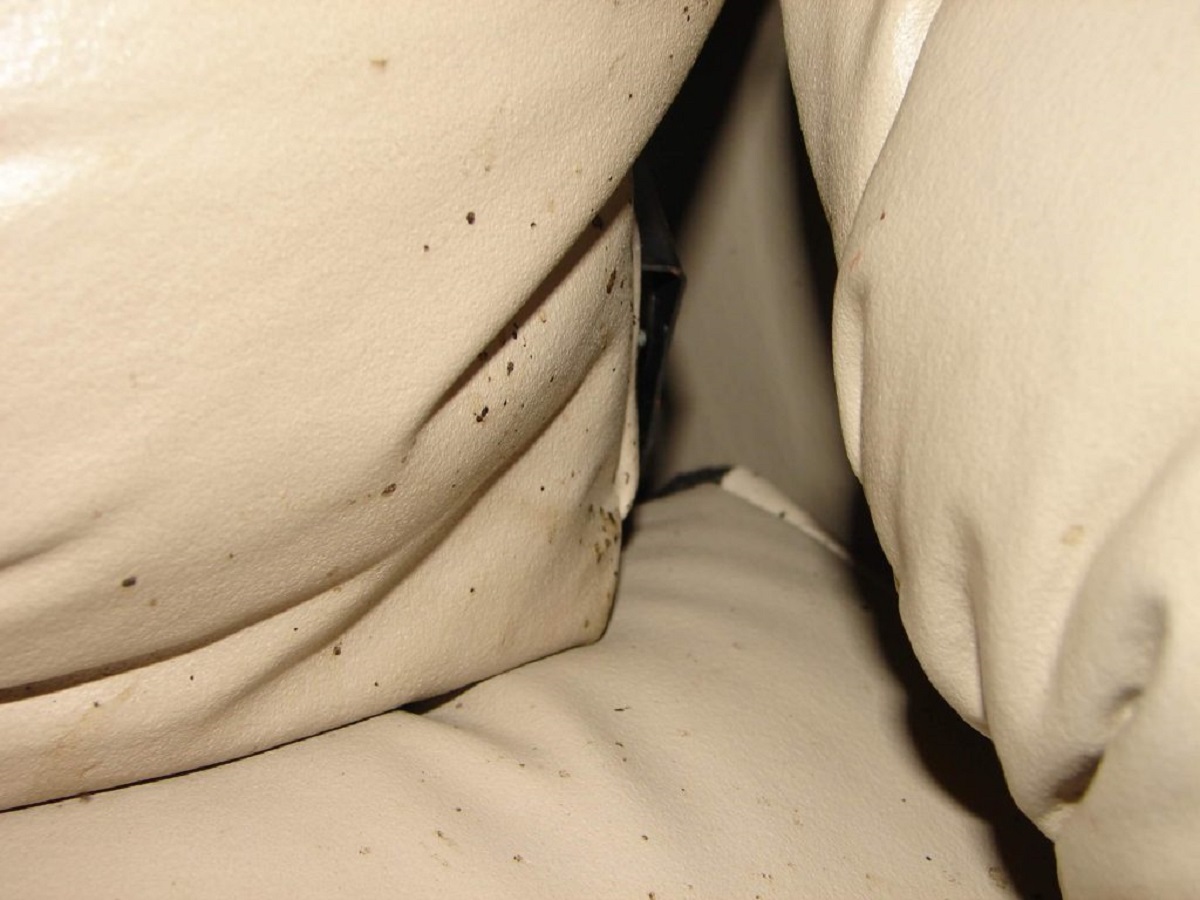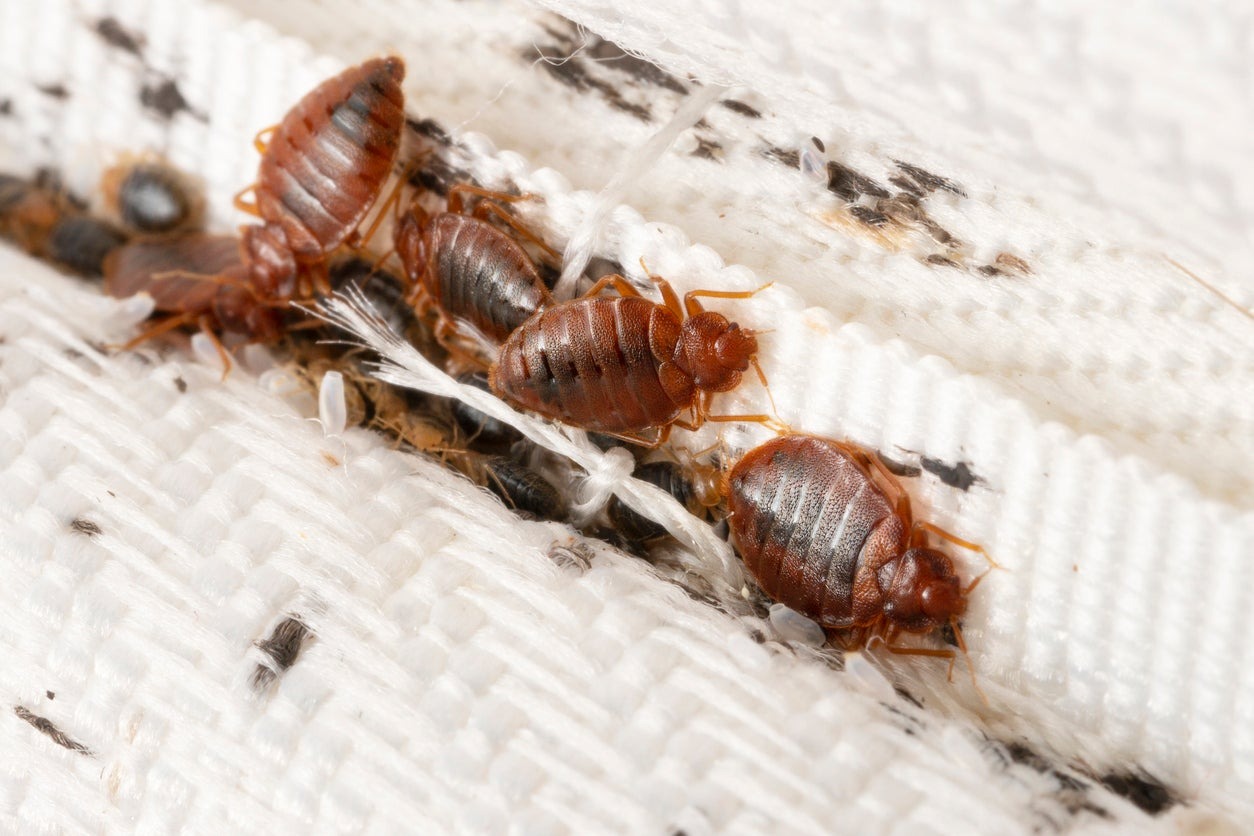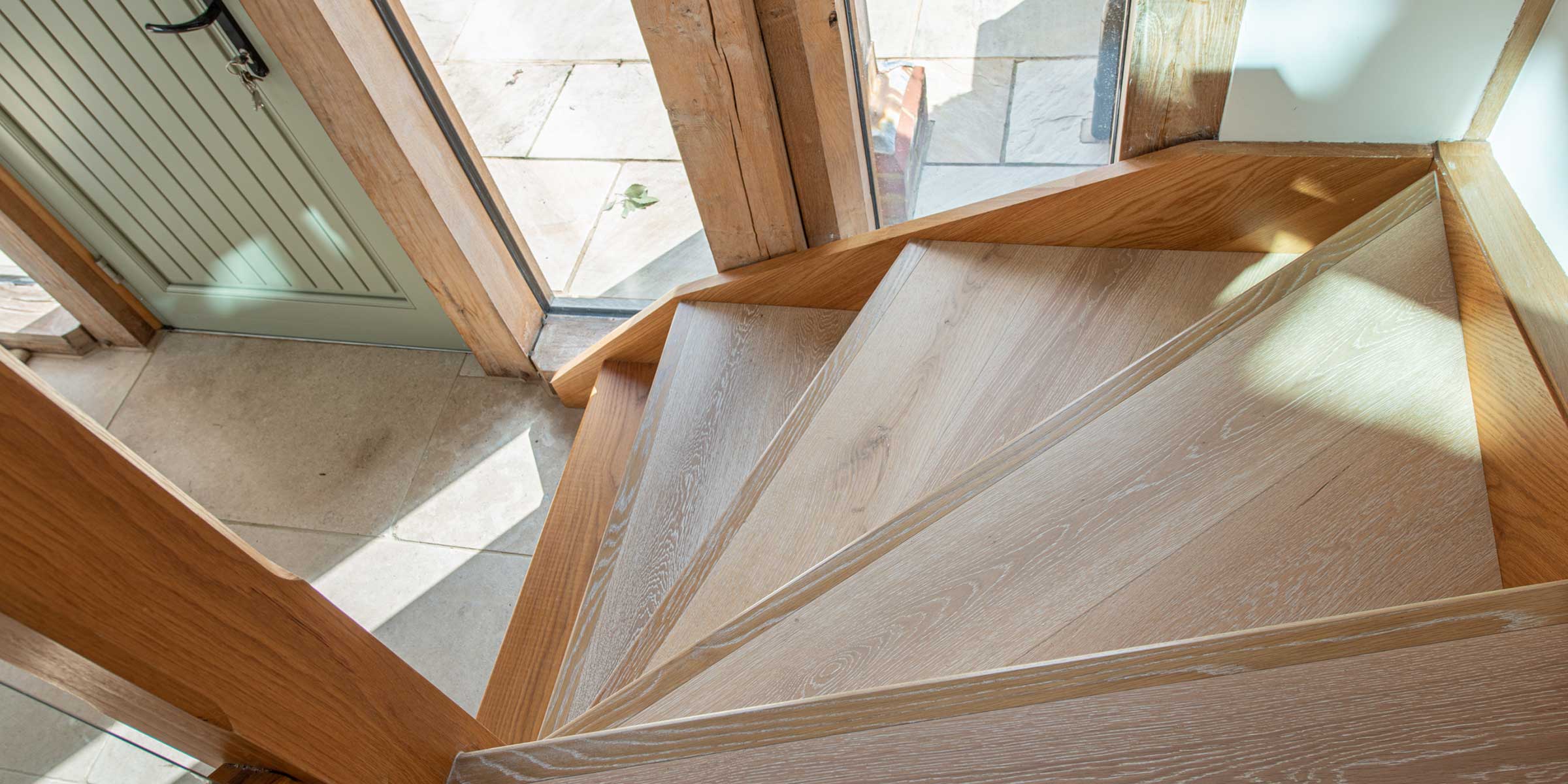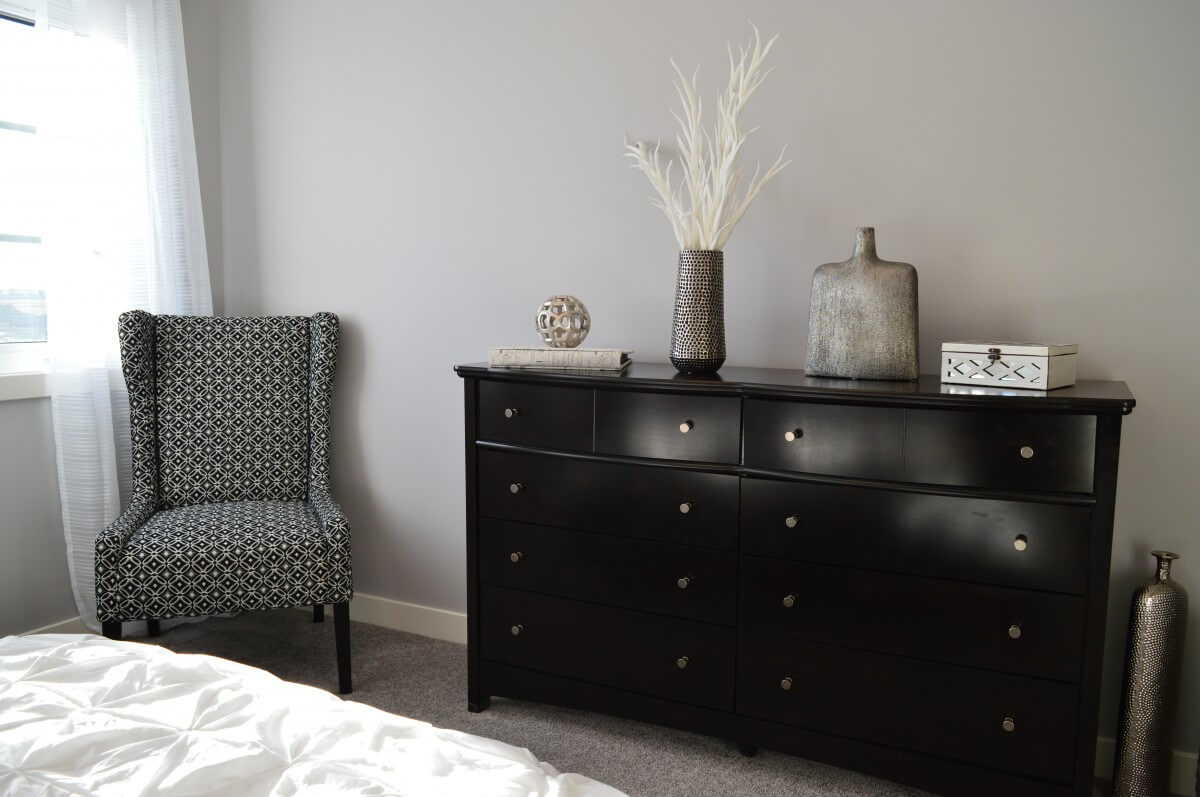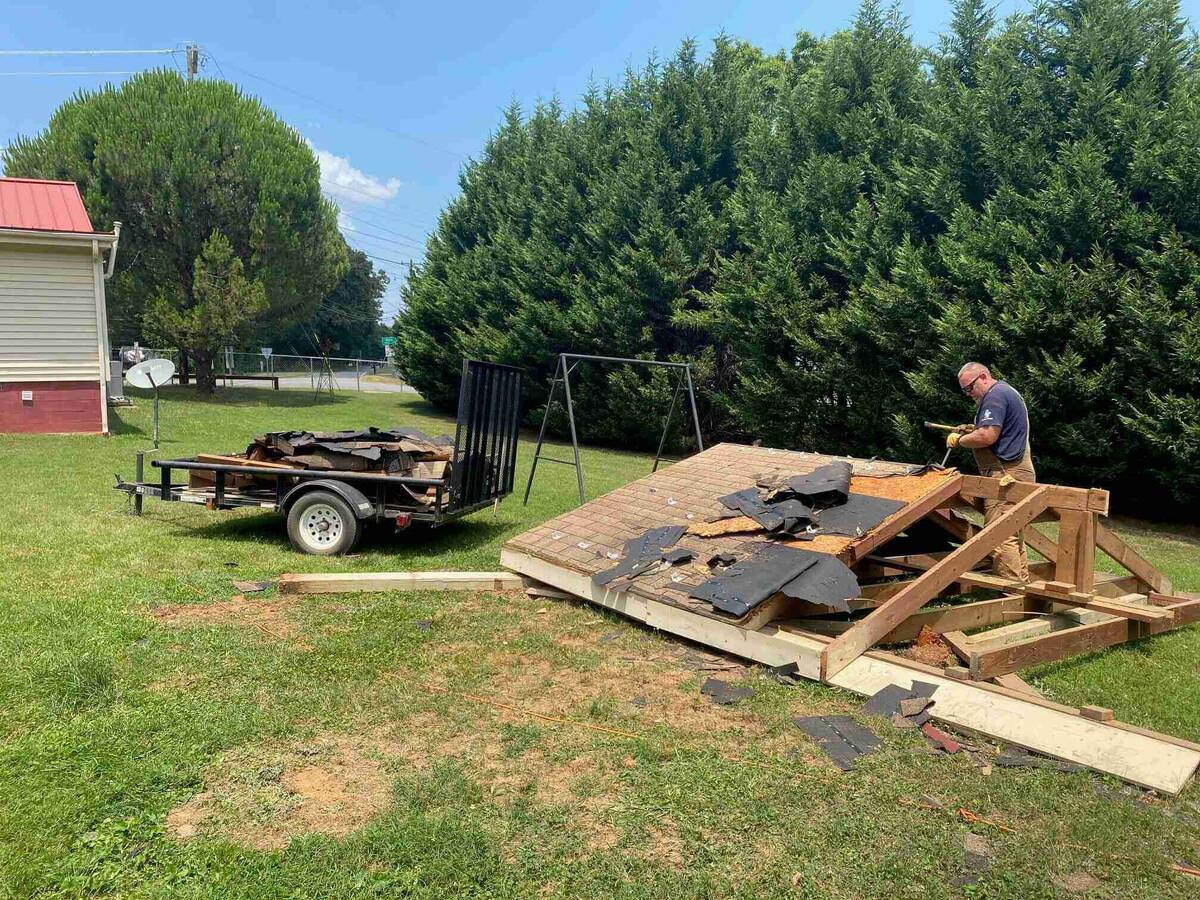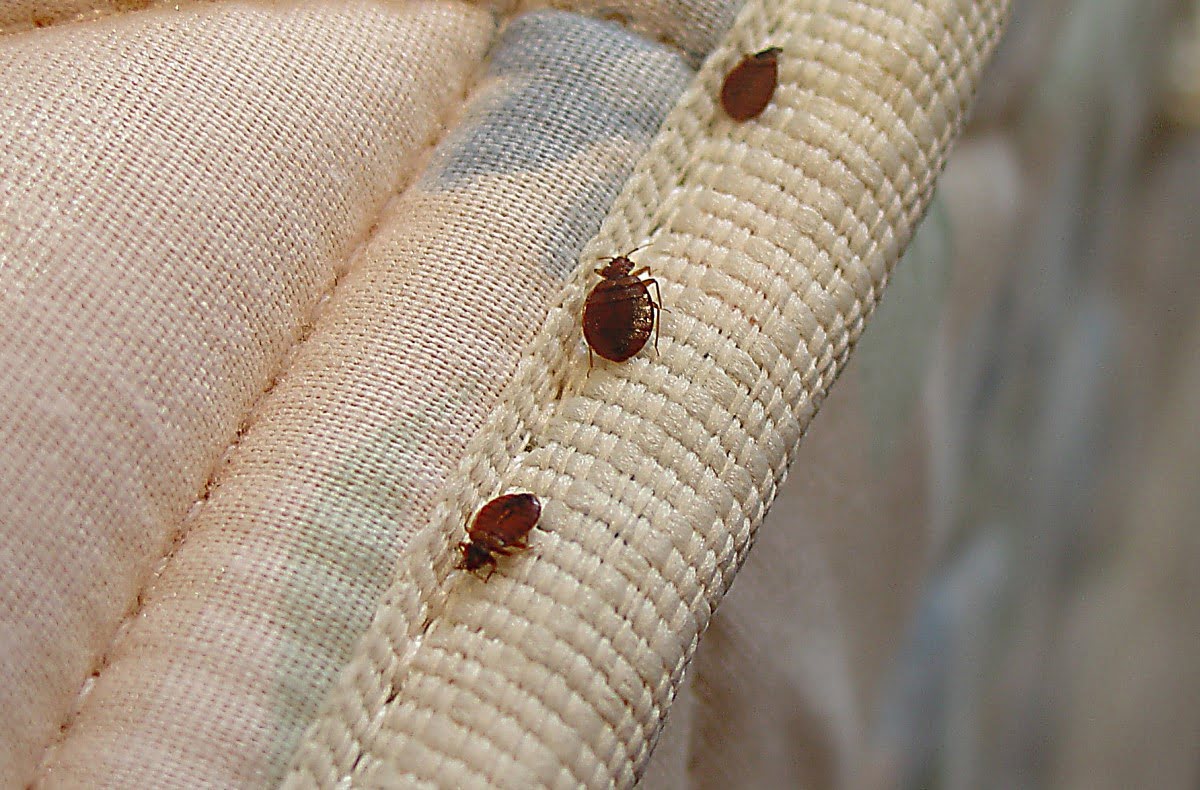Home>Furniture>Bedroom Furniture>How To Get Rid Of A Blocked Nose In Bed


Bedroom Furniture
How To Get Rid Of A Blocked Nose In Bed
Modified: January 7, 2024
Discover effective tips to relieve a blocked nose in bed with the help of bedroom furniture. Improve your sleep quality and wake up refreshed.
(Many of the links in this article redirect to a specific reviewed product. Your purchase of these products through affiliate links helps to generate commission for Storables.com, at no extra cost. Learn more)
Introduction
There’s nothing worse than trying to get a good night’s sleep, only to be constantly interrupted by a blocked nose. Whether it’s due to allergies, a cold, or sinus congestion, a blocked nose can make it difficult to breathe and disrupt your sleep cycle.
Fortunately, there are several effective remedies you can try at home to unclog your nose and find relief. In this article, we will explore the causes of a blocked nose in bed and provide you with a comprehensive list of home remedies to help you breathe easier during sleep.
Before we delve into the remedies, it’s important to understand the common causes of nasal congestion in bed. Allergies play a significant role in causing a blocked nose, especially during certain times of the year when pollen or dust mites are in abundance. Additionally, sinus infections, colds, and even certain hormonal changes can contribute to nasal congestion.
Now, let’s take a closer look at some of the most effective home remedies to get rid of a blocked nose in bed.
Key Takeaways:
- Home remedies like steam inhalation, saline nasal spray, and nasal irrigation can provide natural relief for a blocked nose in bed, promoting easier breathing and a restful night’s sleep.
- It’s important to seek medical attention if symptoms persist, worsen, or if there are signs of severe pain, difficulty breathing, or recurring infections. Professional evaluation can ensure proper diagnosis and treatment for long-term relief.
Read more: How To Get Rid Of Bed Mites
Causes of a blocked nose in bed
Understanding the underlying causes of a blocked nose in bed can help you determine the most effective remedies. Here are some common factors that can contribute to nasal congestion during sleep:
- Allergies: Allergic rhinitis, commonly known as hay fever, is a common cause of a blocked nose. Exposure to allergens like pollen, dust mites, pet dander, or mold can trigger an allergic reaction, leading to nasal congestion.
- Colds and Sinus Infections: Viral infections, such as the common cold, can cause inflammation and swelling in the nasal passages, leading to a blocked nose. Sinus infections can also result in nasal congestion, as the sinuses become inflamed and produce excess mucus.
- Nasal Polyps: Nasal polyps are noncancerous growths that can develop in the nasal passages or sinuses. They can cause a blocked nose by obstructing the airflow and increasing mucus production.
- Deviated Septum: A deviated septum occurs when the thin wall between your nostrils is displaced to one side. This structural abnormality can lead to chronic nasal congestion, making it difficult to breathe while lying down.
- Hormonal Changes: Hormonal fluctuations can cause nasal congestion, particularly during pregnancy. Increased blood flow and hormonal changes can lead to swelling in the nasal passages, resulting in a blocked nose.
Identifying the root cause of your blocked nose in bed can help you tailor your treatment approach and select the most appropriate remedies. It’s also important to note that if you experience persistent nasal congestion or have underlying medical conditions, it’s best to consult with a healthcare professional for a proper diagnosis and guidance.
Home remedies to get rid of a blocked nose in bed
If you’re struggling with a blocked nose in bed, there are several simple and effective home remedies you can try. These remedies can help alleviate nasal congestion and improve airflow, allowing you to breathe easier while you sleep. Here are ten home remedies to consider:
- Steam inhalation: Inhaling steam can help loosen mucus and relieve nasal congestion. Fill a bowl with hot water, place a towel over your head, and lean over the bowl to inhale the steam. Adding a few drops of essential oils like eucalyptus or peppermint can provide additional soothing effects.
- Saline nasal spray: Using a saline nasal spray can help moisturize the nasal passages and wash away irritants and mucus. It can provide temporary relief from a blocked nose and promote easier breathing.
- Nasal irrigation: Also known as nasal flushing, this is the process of using a neti pot or a nasal irrigator to flush out the nasal passages with a saline solution. By rinsing the nasal passages, you can remove excess mucus and clear congestion.
- Warm compress: Applying a warm compress over your sinuses can help reduce inflammation and ease nasal congestion. Simply place a warm towel or a warm water bottle over the affected area for a few minutes.
- Elevate your head while sleeping: Elevating your head while sleeping can promote better drainage and reduce nasal congestion. Use a few extra pillows or elevate the head of your bed to create a slight incline.
- Use a humidifier: Dry air can worsen nasal congestion, so using a humidifier in your bedroom can help add moisture to the air, making it easier to breathe. Be sure to clean your humidifier regularly to prevent the growth of bacteria or mold.
- Stay hydrated: Drinking plenty of fluids can thin the mucus in your nasal passages, making it easier to expel. Opt for warm liquids like herbal tea or warm water with lemon to soothe your airways.
- Avoid allergens and irritants: Identify and avoid any triggers that may be causing your nasal congestion, such as dust, pet dander, or pollen. Keep your bedroom clean and well-ventilated to minimize exposure to allergens.
- Over-the-counter nasal decongestants: Temporary relief from a blocked nose can be achieved by using over-the-counter nasal decongestant sprays or drops. However, be mindful of not using them for extended periods as they can cause rebound congestion.
- Essential oils: Certain essential oils, such as eucalyptus, peppermint, or tea tree oil, have natural decongestant properties. You can inhale them using a diffuser or add a few drops to a warm bath.
These home remedies can help provide temporary relief from a blocked nose in bed. However, if your symptoms persist or worsen, it’s important to consult a healthcare professional for an accurate diagnosis and appropriate treatment.
Steam inhalation
Steam inhalation is a popular and effective remedy for relieving a blocked nose. The warm steam helps to loosen mucus and reduce nasal congestion, making it easier to breathe. Here’s how you can perform steam inhalation:
- Boil water: Fill a pot with water and bring it to a boil on the stove.
- Add essential oils (optional): You can enhance the effectiveness of steam inhalation by adding a few drops of essential oils like eucalyptus or peppermint. These oils have natural decongestant properties and can provide additional relief for your blocked nose.
- Cover your head: Once the water is boiling, carefully remove it from the heat source and place it on a heat-resistant surface. Sit down and position your face over the pot, keeping a safe distance to avoid burns.
- Use a towel: Cover your head with a towel, creating a tent-like structure to capture the steam. This will help direct the steam towards your face and prevent it from escaping.
- Inhale the steam: Close your eyes and take slow, deep breaths, inhaling the steam through your nose. You should feel the warm vapor entering your nasal passages and providing soothing relief to your blocked nose.
- Repeat as necessary: Continue inhaling the steam for about 5-10 minutes or until you feel relief. You can perform steam inhalation 2-3 times a day or as needed.
Steam inhalation is a safe and natural way to alleviate a blocked nose. The warm steam helps to moisten and loosen the mucus, making it easier to expel. However, be cautious while handling hot water to prevent accidents or burns. Ensure proper ventilation in the room to avoid inhaling overly hot steam.
Note that steam inhalation may not be suitable for everyone, particularly if you have asthma or other respiratory conditions. If you’re unsure about whether steam inhalation is suitable for you, it’s best to consult with a healthcare professional.
Saline nasal spray
Using a saline nasal spray is a simple and effective remedy for clearing a blocked nose. Saline solution is a mixture of salt and water that helps to moisturize the nasal passages and flush out irritants, allergens, and excess mucus. Here’s how you can use saline nasal spray:
- Purchase or make saline solution: You can easily find saline nasal sprays at your local pharmacy or make your own saline solution at home by dissolving 1/4 teaspoon of salt in 8 ounces of distilled or boiled water. Make sure the water is at a comfortable temperature.
- Position yourself: Stand over a sink or tilt your head backward slightly.
- Insert the nozzle: Place the nozzle of the saline nasal spray into one nostril, pressing it gently so that it forms a seal to prevent leakage.
- Spray and breathe: While keeping your mouth closed, spray the saline solution into your nostril by squeezing the bottle. Breathe in gently through your nose as you spray.
- Blow your nose: Allow the saline solution to sit in your nasal passages for a few seconds, then blow your nose gently to remove the excess mucus and saline solution.
- Repeat on the other side: Repeat the process for the other nostril to ensure both sides of your nasal passages are clear.
- Use as needed: You can use the saline nasal spray multiple times a day, especially when you feel your nose getting blocked. It is safe for regular use and can provide long-lasting relief.
Saline nasal spray is a gentle and non-medicated option for clearing a blocked nose. It helps to keep the nasal passages moist, reduce inflammation, and flush out allergens and irritants. It is suitable for adults and children alike and can be used alongside other congestion-relieving methods.
However, avoid sharing your saline nasal spray with others to prevent the spread of germs. Additionally, if your symptoms worsen or persist despite regular use of saline nasal spray, it’s important to consult a healthcare professional for further evaluation and guidance.
Read more: How To Get Rid Of Bed Bugs
Nasal irrigation
Nasal irrigation, also known as nasal flushing or nasal lavage, is a technique that involves rinsing the nasal passages with a saline solution. It helps to clear out mucus, allergens, and irritants, providing relief from a blocked nose. Here’s how you can perform nasal irrigation:
- Purchase a nasal irrigation device: You can find nasal irrigation devices such as a neti pot or a squeeze bottle at your local pharmacy or online. Choose a device that you are comfortable using.
- Prepare the saline solution: Mix 1/4 teaspoon of salt with 8 ounces of distilled or boiled water. You can also use pre-packaged saline solution packets that are available with nasal irrigation kits.
- Fill the device: Fill the neti pot or squeeze bottle with the prepared saline solution. Make sure the solution is at a lukewarm temperature.
- Lean over a sink: Position yourself over a sink or stand in the shower to avoid making a mess.
- Tilt your head: Tilt your head to one side at about a 45-degree angle.
- Insert the spout: Place the spout of the nasal irrigation device into your top nostril.
- Start the flow: Slowly pour or squeeze the saline solution into your nostril. The solution will flow through your nasal passages and come out from the opposite nostril or your mouth.
- Repeat on the other side: Repeat the process for the other nostril, tilting your head in the opposite direction.
- Blow your nose: After completing the nasal irrigation, gently blow your nose to remove any remaining saline solution and mucus.
- Clean the device: Thoroughly clean the nasal irrigation device after each use according to the manufacturer’s instructions. This will help prevent the growth of bacteria or mold.
Nasal irrigation can be a highly effective method to clear a blocked nose. It helps to flush out mucus, allergens, and irritants, providing relief from nasal congestion. Nasal irrigation is generally safe for most people when performed correctly, but it’s important to use distilled or boiled water and to follow proper hygiene practices.
However, nasal irrigation may not be suitable for everyone. It’s best to consult with a healthcare professional if you have any concerns or if you experience any adverse effects after performing nasal irrigation. They can provide personalized advice based on your specific condition and medical history.
Warm compress
A warm compress is a simple yet effective remedy for easing a blocked nose. Applying heat to the nasal area helps to reduce inflammation and open up the nasal passages, providing relief from congestion. Here’s how you can use a warm compress:
- Prepare a warm compress: Wet a clean washcloth with warm water. Make sure the water is at a comfortable temperature, not too hot to avoid burns.
- Squeeze out excess water: Gently squeeze out any excess water from the washcloth, leaving it slightly damp.
- Apply to the nasal area: Place the warm compress over your nose and cheeks, covering the affected area. You can also wrap the warm compress around the back of your neck or forehead for added relief.
- Relax and breathe: Close your eyes and relax while keeping the warm compress in place. Take slow, deep breaths through your nose, allowing the warmth to penetrate the nasal passages.
- Leave on for a few minutes: Keep the warm compress on your nose for about 5-10 minutes, or until you feel relief from the blocked nose.
- Repeat as necessary: You can use a warm compress multiple times a day or as needed to alleviate nasal congestion.
A warm compress is a safe and non-invasive method to reduce nasal congestion. The heat helps to improve blood circulation and decrease inflammation, making it easier to breathe through your nose. It is particularly beneficial if the congestion is caused by sinusitis or sinus pressure.
Remember to always test the temperature of the warm compress before applying it to your face to prevent burns. If you have sensitive skin or any medical conditions, it’s advisable to consult with a healthcare professional before using a warm compress.
Elevate your head while sleeping
Elevating your head while sleeping can help alleviate a blocked nose by promoting better drainage and reducing nasal congestion. By raising your head and upper body, you can prevent mucus from pooling in the nasal passages, making it easier to breathe. Here are a few methods to elevate your head while sleeping:
- Extra pillows: Add one or two extra pillows under your head to create a gentle incline. This will help elevate your head and keep it raised throughout the night.
- Adjustable bed: If you have an adjustable bed, raise the head section to a comfortable angle that promotes easier breathing.
- Wedge pillow: Consider using a specially designed wedge pillow that is shaped to elevate your upper body. These pillows provide firm support and help keep your head and shoulders elevated while you sleep.
- Propped-up position: If you don’t have extra pillows or a wedge pillow, you can also prop up the head side of your mattress using sturdy objects like books or wood blocks. Ensure that the objects are stable and secure before lying down.
By elevating your head, you can reduce congestion and improve airflow through your nasal passages, allowing for better breathing and a more restful sleep. It’s essential to find a comfortable position that doesn’t strain your neck or back, and make adjustments as needed.
While elevating your head can be beneficial for relieving nasal congestion temporarily, it’s important to address the underlying causes of your blocked nose for long-term relief. If your symptoms persist or worsen, it’s advisable to consult with a healthcare professional for further evaluation and guidance.
Sleep with your head elevated to help reduce nasal congestion. Use an extra pillow or a wedge pillow to keep your head and chest elevated, allowing mucus to drain more easily.
Use a humidifier
Using a humidifier can be a helpful remedy for a blocked nose caused by dry air. Dry air can irritate the nasal passages, leading to congestion and discomfort. A humidifier adds moisture to the air, creating a more humid environment that can soothe and moisturize your nasal passages. Here’s how you can use a humidifier effectively:
- Purchase the right humidifier: There are different types of humidifiers available, such as cool mist, warm mist, and ultrasonic humidifiers. Choose one that suits your preferences and needs.
- Set up the humidifier: Place the humidifier in your bedroom, away from electronics and furniture. Follow the manufacturer’s instructions for filling the water tank and adjusting the settings.
- Keep the humidity level balanced: It’s important to maintain an optimal humidity level in your room, typically between 40-60%. Too much humidity can promote the growth of mold and bacteria, while too little humidity may not provide sufficient relief for your blocked nose.
- Clean the humidifier regularly: To prevent the buildup of mold and bacteria, clean your humidifier as recommended by the manufacturer. Regular maintenance will ensure that the humidifier operates effectively and provides clean, moisture-rich air.
- Use distilled or filtered water: Use distilled or filtered water in your humidifier to avoid introducing impurities into the air. This can help prevent the formation of white mineral dust and maintain a clean environment.
- Place the humidifier near your bed: Position the humidifier near your bed so that the moist air is directed towards your nasal passages while you sleep.
A humidifier can help ease nasal congestion by adding moisture to the air, relieving dryness and irritation in your nasal passages. However, it’s important to note that humidifiers require regular cleaning and maintenance to avoid the growth of harmful bacteria or mold. Always follow the manufacturer’s instructions for proper usage and cleaning procedures.
If you have a respiratory condition, such as asthma, or live in an area with high humidity levels, consult with a healthcare professional before using a humidifier to ensure it is appropriate for your specific needs.
Read more: How To Get Rid Of Grass In A Garden Bed
Stay hydrated
Staying hydrated is essential for overall health and can also help alleviate a blocked nose. When you are dehydrated, the nasal passages can become dry and irritated, leading to congestion and discomfort. By maintaining adequate hydration, you can keep your nasal passages moist and facilitate easier breathing. Here’s how you can stay hydrated and relieve a blocked nose:
- Drink plenty of fluids: Aim to drink at least eight glasses of water or other hydrating fluids throughout the day. Water is the best option, but you can also have herbal tea, clear broth, or warm lemon water.
- Use a humidifier: As mentioned earlier, using a humidifier in your bedroom can add moisture to the air and prevent dryness in your nasal passages.
- Limit caffeine and alcohol: Both caffeine and alcohol can dehydrate your body. If you consume these beverages, do so in moderation and be sure to drink extra water to counteract their dehydrating effects.
- Eat hydrating foods: Include foods with high water content in your diet, such as fruits (watermelon, oranges, strawberries), vegetables (cucumbers, celery, lettuce), and soups. These foods can contribute to your overall hydration levels.
- Monitor urine color: A simple way to check your hydration status is by observing the color of your urine. Clear or light-colored urine indicates adequate hydration, while dark-colored urine suggests dehydration.
- Carry a water bottle: Keep a water bottle with you throughout the day to remind yourself to drink water regularly. This can help ensure you stay hydrated, especially during busy or active periods.
- Listen to your body: Pay attention to signs of thirst and drink water whenever you feel thirsty. Your body knows best when it needs hydration.
By staying properly hydrated, you can maintain the moisture balance in your nasal passages, reducing the risk of congestion. It’s important to note that staying hydrated is a long-term strategy, and it may take time to notice the effects on your blocked nose. Consistency is key to maintaining good hydration levels.
If your symptoms persist or worsen despite staying hydrated, it’s advisable to seek medical advice from a healthcare professional for further evaluation.
Avoid allergens and irritants
Avoiding allergens and irritants is an important step in preventing and reducing nasal congestion. Certain substances can trigger allergic reactions or irritate the nasal passages, leading to a blocked nose. By identifying and avoiding these triggers, you can minimize the occurrence of congestion and improve your breathing. Here are some strategies to help you avoid allergens and irritants:
- Pollen: Pay attention to pollen forecasts and limit your outdoor activities during peak pollen times. Keep windows closed and use air purifiers with HEPA filters in your home to minimize exposure to pollen.
- Dust mites: Use allergen-proof covers on your mattresses, pillows, and bedding to prevent dust mite allergens from accumulating. Wash your bedding regularly in hot water to kill dust mites.
- Pet dander: If you’re allergic to pet dander, try to keep pets out of your bedroom and regularly groom them to reduce the amount of dander in your living space. Vacuum and dust your home frequently to remove pet hair and dander.
- Mold: Prevent mold growth by keeping your home well-ventilated and dry. Fix any sources of water leaks or moisture issues promptly. Use dehumidifiers in damp areas like basements or bathrooms to reduce humidity levels.
- Cigarette smoke: Avoid exposure to cigarette smoke, as it can irritate your nasal passages and worsen congestion. If you smoke, consider quitting, or at least avoid smoking in enclosed spaces or around others.
- Chemical irritants: Be mindful of strong fumes from cleaning products, perfumes, or chemicals, as they can trigger nasal congestion. Use non-irritating, fragrance-free products when possible, and ensure good ventilation when using chemicals.
- Avoid known triggers: If you are aware of specific allergens or irritants that cause nasal congestion for you, take proactive measures to avoid them. This may involve avoiding certain foods, fabrics, or environmental factors.
By minimizing your exposure to allergens and irritants, you can reduce the frequency and severity of nasal congestion. However, it may not always be possible to completely avoid all triggers, especially outdoor allergens. In those cases, implementing other strategies like nasal irrigation or medications may be necessary.
If you’re unsure about your specific triggers or need assistance in identifying them, consider consulting with an allergist or immunologist who can conduct tests and provide personalized guidance.
Over-the-counter nasal decongestants
Over-the-counter nasal decongestants can provide temporary relief from a blocked nose by reducing nasal congestion and swelling of the nasal passages. These medications work by constricting the blood vessels in the nose, which helps to open up the airways and improve breathing. Here’s what you need to know about using over-the-counter nasal decongestants:
- Choose the right product: There are different types of nasal decongestants available, including nasal sprays, nasal drops, and oral tablets. Choose the formulation that suits your preference and needs.
- Read and follow the instructions: Carefully read the instructions and dosage recommendations provided on the packaging. Never exceed the recommended dosage or use the nasal decongestant for longer than instructed, as this can lead to rebound congestion or other side effects.
- Use for a limited duration: Over-the-counter nasal decongestants are meant to be used for short-term relief, typically no more than three to five consecutive days. Prolonged use can result in dependency and worsen nasal congestion.
- Consider using a saline nasal spray: If you prefer a milder option, saline nasal sprays can also provide relief from a blocked nose without the risk of rebound congestion or dependency. These sprays work by moisturizing the nasal passages and flushing out mucus and irritants.
- Consult a healthcare professional: If you have underlying medical conditions, such as high blood pressure, heart disease, or thyroid problems, or if you’re taking other medications, consult with a healthcare professional before using nasal decongestants to ensure they are safe for you.
- Be cautious with nasal sprays: Nasal sprays can cause some side effects like dryness, burning, or nasal irritation. Follow the recommended dosage and technique for application to minimize the risk of adverse effects.
While over-the-counter nasal decongestants can provide temporary relief, it is important to address the underlying cause of your nasal congestion for long-term improvement. If your symptoms persist or worsen, it is advisable to consult with a healthcare professional for further evaluation and guidance.
Additionally, nasal decongestants are not suitable for everyone, such as young children, pregnant women, and individuals with certain medical conditions. It is essential to read the product labels and follow the instructions or seek professional advice before using these medications.
Essential oils
Using essential oils can provide natural and soothing relief for a blocked nose. Certain essential oils have decongestant, anti-inflammatory, and antimicrobial properties that can help clear your nasal passages and promote easier breathing. Here are a few essential oils to consider:
- Eucalyptus oil: Eucalyptus oil is well-known for its decongestant properties. Its strong aroma helps open up the airways and reduce nasal congestion. You can add a few drops of eucalyptus oil to a diffuser or inhale it directly from a tissue.
- Peppermint oil: Peppermint oil has a refreshing scent and contains menthol, which can help clear blocked nasal passages. You can dilute a few drops of peppermint oil in a carrier oil, like coconut oil, and apply it to your chest or inhale it for relief.
- Tea tree oil: Tea tree oil possesses antimicrobial properties that can help reduce inflammation and fight off bacteria or viruses. You can mix a few drops of tea tree oil with a carrier oil and apply it topically to your chest or inhale it for its beneficial effects.
- Lavender oil: Lavender oil is known for its calming and soothing properties. It can help relieve nasal congestion caused by stress or inflammation. You can add a few drops of lavender oil to a warm bath or use it in a diffuser to promote relaxation.
- Chamomile oil: Chamomile oil has anti-inflammatory properties that can help reduce nasal inflammation and congestion. You can dilute a few drops of chamomile oil in a carrier oil or add it to a warm compress to inhale its soothing aroma.
When using essential oils, it is important to dilute them properly and follow the recommended guidelines. Essential oils are highly concentrated and can be irritating if used undiluted or in excessive amounts. Conduct a patch test before applying to ensure you do not have any sensitivities or allergies.
Note that essential oils are not suitable for everyone, especially young children, pregnant women, or individuals with certain medical conditions. If you have any concerns or questions, consult with a healthcare professional or an aromatherapist before using essential oils.
Essential oils can complement other home remedies for a blocked nose and provide natural relief. However, if your symptoms persist or worsen, it’s important to seek medical attention for a proper diagnosis and appropriate treatment.
Read more: How To Get Rid Of Bed Bugs On A Mattress
When to seek medical attention
While most cases of a blocked nose can be relieved with home remedies, there are situations where it is advisable to seek medical attention. It’s important to recognize when your symptoms may indicate an underlying condition that requires professional evaluation and treatment. Here are some signs that indicate the need for medical attention:
- Persistent or worsening symptoms: If your blocked nose persists for more than two weeks or if your symptoms worsen despite trying home remedies, it is wise to consult a healthcare professional. This could be a sign of a more serious underlying condition that needs to be addressed.
- Severe pain or swelling: If you experience severe facial pain, swelling, or pressure, it may indicate a sinus infection or other complications requiring medical intervention.
- Difficulty breathing: If your blocked nose is accompanied by severe difficulty breathing, shortness of breath, or wheezing, seek immediate medical attention, as it may indicate a more serious respiratory problem.
- Bleeding from the nose: If your blocked nose is accompanied by frequent or significant nosebleeds, it may require medical evaluation, as it could be a sign of an underlying issue such as a nasal injury or nasal polyps.
- Recurring infections: If you have recurrent sinus infections or nasal congestion that doesn’t seem to improve with home remedies, it’s important to get an evaluation by a healthcare professional to identify the underlying cause and explore appropriate treatment options.
- Underlying medical conditions: If you have pre-existing medical conditions such as asthma, chronic sinusitis, or immune deficiencies, it is advisable to consult with a healthcare professional for proper management of your nasal congestion and to prevent complications.
It’s important to remember that each individual may have unique circumstances and medical history, so it’s always best to trust your instincts and seek medical attention if you have any concerns about your symptoms.
A healthcare professional can provide an accurate diagnosis, recommend appropriate treatment options, and ensure that your symptoms are not indicative of a more serious condition. They may suggest further tests, prescribe medications, or refer you to a specialist for further evaluation and management, if required.
Remember, timely medical attention can help prevent complications and provide you with the necessary relief to breathe comfortably again.
Conclusion
A blocked nose can be frustrating and disrupt your sleep, but there are numerous effective home remedies to help alleviate nasal congestion and improve your breathing. By understanding the underlying causes and implementing the right strategies, you can find relief and enjoy a restful night’s sleep.
In this article, we explored ten home remedies for getting rid of a blocked nose in bed. From steam inhalation and saline nasal sprays to nasal irrigation and using a humidifier, these natural remedies can help moisturize your nasal passages, reduce inflammation, and clear away mucus and irritants.
Additionally, we discussed the importance of staying hydrated, avoiding allergens and irritants, and when to seek medical attention. It’s essential to address any persistent or worsening symptoms, severe pain or swelling, difficulty breathing, recurring infections, and nosebleeds, as these may indicate a more serious underlying condition.
While these home remedies can provide temporary relief, it’s important to consult with a healthcare professional if your symptoms persist, worsen, or if you have any concerns. They can provide proper diagnosis, treatment guidance, and ensure your safety, especially if you have underlying medical conditions or are on other medications.
Remember, finding the right balance of home remedies, lifestyle changes, and professional guidance is crucial for managing a blocked nose effectively. With patience, persistence, and the right approach, you can breathe easier, sleep better, and regain control over your nasal health.
Frequently Asked Questions about How To Get Rid Of A Blocked Nose In Bed
Was this page helpful?
At Storables.com, we guarantee accurate and reliable information. Our content, validated by Expert Board Contributors, is crafted following stringent Editorial Policies. We're committed to providing you with well-researched, expert-backed insights for all your informational needs.
